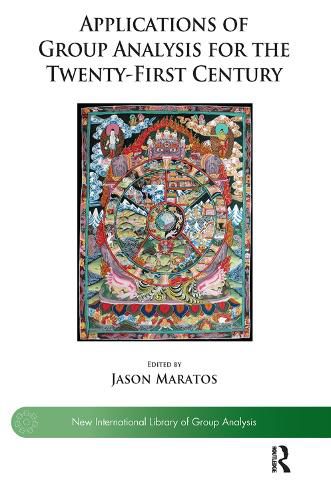Readings Newsletter
Become a Readings Member to make your shopping experience even easier.
Sign in or sign up for free!
You’re not far away from qualifying for FREE standard shipping within Australia
You’ve qualified for FREE standard shipping within Australia
The cart is loading…






The Institute of Group Analysis (IGA) celebrates forty years from its foundation with the publication of these two volumes. The first volume aims to publicise the foundations of group analysis (with the earliest papers of Foulkes) as well as the most influential theoretical contributions by pillars of modern group analysis, such as Pines, Brown, and Hopper. The reader will be able to see the development of Group Analysis, form an opinion about the trajectory that it follows, and judge which way the tradition of openness and creative integration of diverse theoretical contributions will lead in the twenty-first century. The second volume focuses on the numerous fields of work that use group analytic principles. Workers in the field of forensic psychotherapy would now consider a great omission if they did not use some form of group analytic intervention, as would professionals dealing with those who manifest personality disorders or different age groups, such as adolescents. Group analysis has made significant contribution to organisational work, to feminism and anti-discrimination (including anti-racism) as well as in education.
$9.00 standard shipping within Australia
FREE standard shipping within Australia for orders over $100.00
Express & International shipping calculated at checkout
The Institute of Group Analysis (IGA) celebrates forty years from its foundation with the publication of these two volumes. The first volume aims to publicise the foundations of group analysis (with the earliest papers of Foulkes) as well as the most influential theoretical contributions by pillars of modern group analysis, such as Pines, Brown, and Hopper. The reader will be able to see the development of Group Analysis, form an opinion about the trajectory that it follows, and judge which way the tradition of openness and creative integration of diverse theoretical contributions will lead in the twenty-first century. The second volume focuses on the numerous fields of work that use group analytic principles. Workers in the field of forensic psychotherapy would now consider a great omission if they did not use some form of group analytic intervention, as would professionals dealing with those who manifest personality disorders or different age groups, such as adolescents. Group analysis has made significant contribution to organisational work, to feminism and anti-discrimination (including anti-racism) as well as in education.